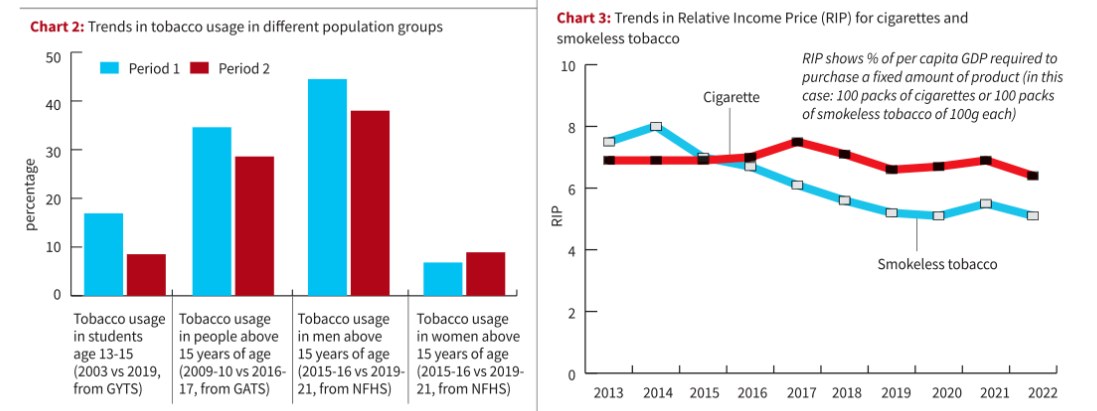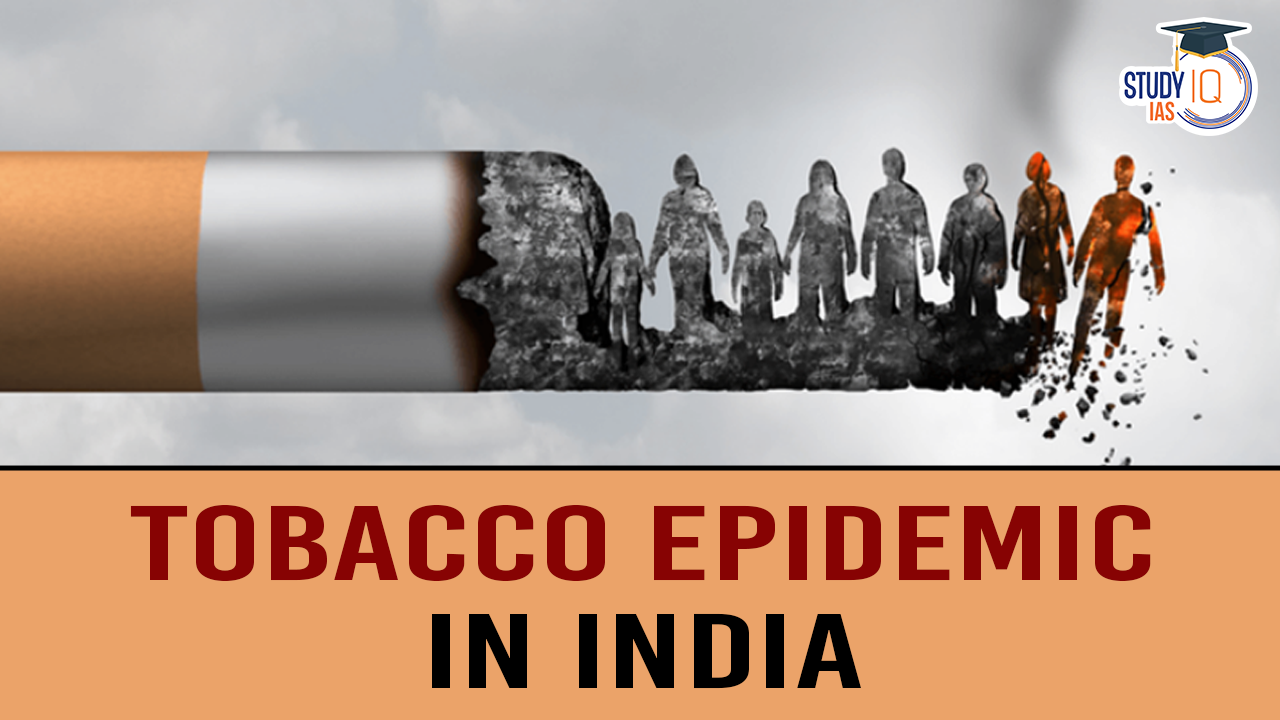Table of Contents
Context: Tobacco is the leading preventable cause of disease and death globally, affecting both consumers and cultivators.
Tobacco’s Impact in India
- India has the world’s second-highest number of tobacco users (26 crore), and the health of 60 lakh tobacco industry workers is at risk.
- Environmental Degradation: Tobacco farming depletes soil, contributes to deforestation (5.4 kg wood per 1 kg tobacco), and generates 1.7 lakh tonnes of waste annually in India.
- Economic Burden: Tobacco-related health costs exceed ₹1.7 lakh crore in India, dwarfing the ₹48,000 crore health budget in 2017-2018.
- Cleaning tobacco waste costs ₹6,367 crore annually, excluding soil and deforestation costs.
Check here all about World No Tobacco Day.
Status of Tobacco Use in India
- Surveys such as the Global Adult Tobacco Survey (GATS), Global Youth Tobacco Survey (GYTS), and India’s National Family Health Survey (NFHS) show a decline in tobacco usage among the surveyed demographics, except for a slight increase among women from 2015-2016 to 2019-2021.
- No surveys have been conducted post-COVID-19, which leaves a gap in current data.

Awareness and Control Programs
- Legal Framework: India has been a signatory of WHO’s Framework Convention on Tobacco Control (FCTC) since 2005 and has the Cigarettes and Other Tobacco Products Act (COTPA) 2003 governing tobacco sales.
- National Tobacco Control Program (NTCP): Launched in 2007 to implement COTPA and FCTC, raise awareness, and aid quitting efforts.
- Taxation: Tobacco is taxed, but implementation is weak, with non-compliance of smokeless tobacco products (SLTs) with COTPA guidelines, poorly regulated smuggled products, and outdated fines.
- Surrogate Advertising: While direct ads are banned, indirect ads (surrogate advertising) persist, promoting tobacco brands through proxy products.
Affordability and Implementation Challenges
- Failed Amendments: Proposed COTPA amendments in 2015 and 2020, addressing surrogate ads and licensing, were not passed.
- NTCP Ineffectiveness: A 2018 study found no significant difference in bidi or cigarette consumption reduction between NTCP and non-NTCP districts due to insufficient staffing, resources, and monitoring.
- Tax Evasion: Tobacco taxes remain low due to evasion, smuggling, illicit manufacturing, and counterfeiting. Transition to GST further increased affordability.
- Lobbying Power: The tobacco lobby influences policy, with exemptions for bidis and smaller manufacturers, government officials engaging with the industry, and the central government holding a stake in ITC Ltd.
Additional Challenges and Opportunities
- E-Cigarettes: Banned by the Prohibition of Electronic Cigarette Act (PECA) 2019, yet remain a challenge with 23% reported use and 8% daily use in an online survey.
- Farmer Support: Government support for tobacco farmers to switch to alternate crops like jowar, which can be more profitable, is crucial.
- Data Needs: Up-to-date data on tobacco use trends is needed to counter the industry’s evolving strategies.
Way Forward
- Strengthen Implementation: Stringent implementation of COTPA, PECA, and NTCP.
- Increase Taxation: Align taxes with FCTC recommendations, inflation, and GDP growth.
- Support Farmers: Aid tobacco farmers in transitioning to alternate crops.
- Gather Data: Collect up-to-date data to track tobacco use trends.


 Pariksha pe Charcha 2025, Overview, Even...
Pariksha pe Charcha 2025, Overview, Even...
 National Policy on Framework on Agricult...
National Policy on Framework on Agricult...
 How Scientists used Scotch tape to Creat...
How Scientists used Scotch tape to Creat...




















